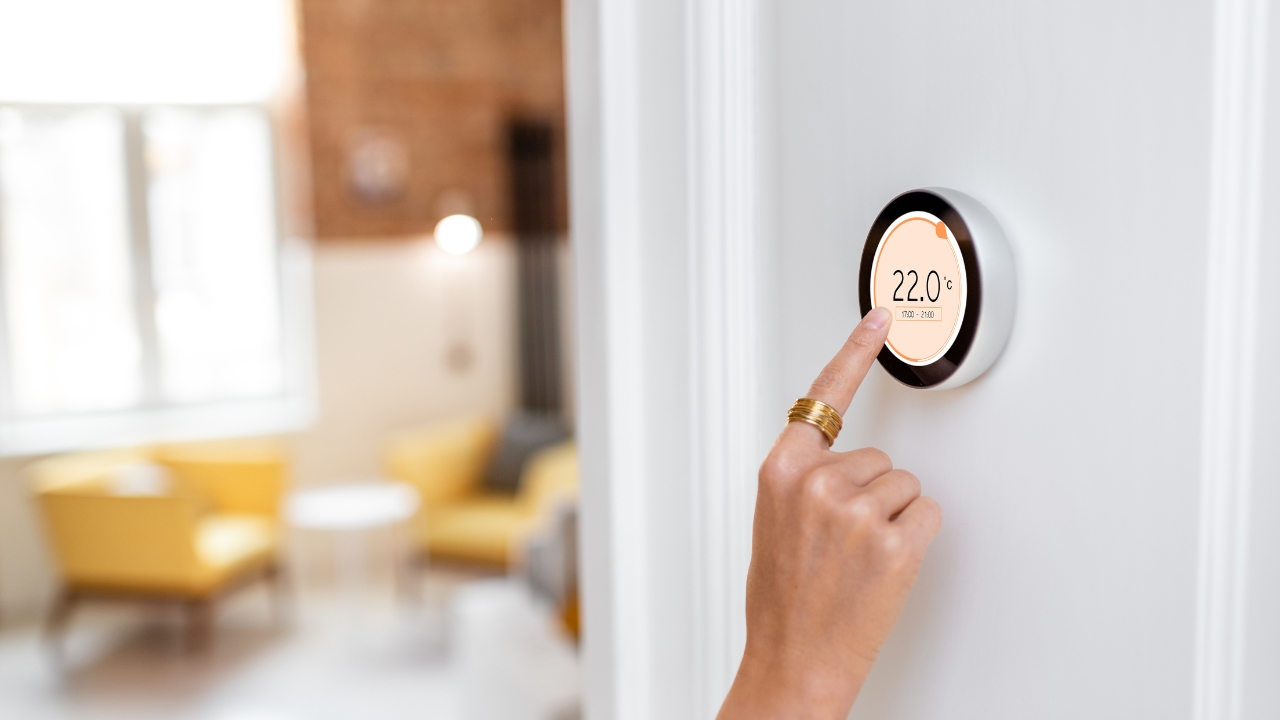
In summer, in hot areas like southern Europe, especially in Spain, we all try to cool our homes and businesses to create a more pleasant environment, which entails considerable energy consumption. When the winter season arrives, the cold makes us do the opposite, heat the rooms to be comfortable with low temperatures. In both cases, things can be done to reduce consumption or improve energy efficiency.
In this article I will focus on heating, recommending some tips and tricks to improve efficiency in homes and also analyzing What are the most efficient and economical means of heating?, something that is a current debate about which there are several doubts...
Average annual consumption data for heating

The average electricity consumption for heating in Spain can vary depending on several factors, such as the size of the home, the number of inhabitants, consumption habits, location and the type of insulation of the house. However, it is estimated that the Average electricity consumption of a Spanish home is about 5.172 kWh/year according to the OCU itself. A consumption much higher than other household appliances and everyday devices.
It is estimated that represents approximately 47% of total energy consumption of Spanish households, which would mean almost half of the electricity bill expense. Therefore, if we apply this percentage to the average annual electricity consumption, we obtain that the average electricity expenditure for heating could range between 1.960 and 2.168 euros, a real outrage. Therefore, you must contribute to the environment and reduce this rate with the solutions that we provide here...
Tricks and tips to better insulate the home and reduce consumption
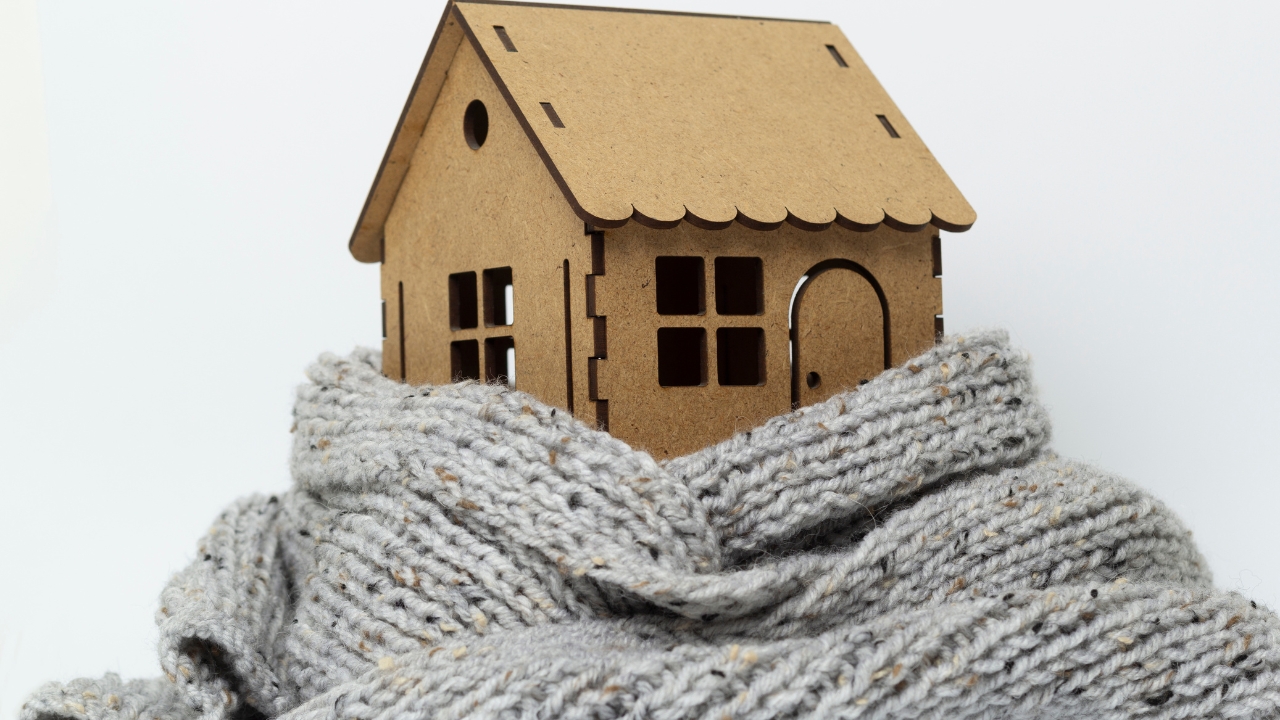
To save on energy and always have the house at a warm temperature, you can also do many other things, and not just buy an efficient device. Here are some of the recommendations that will help you do this:
- suitable temperature: Use a thermostat, preferably a smart one, to maintain a constant temperature in your home. It is recommended to keep the temperature between 19 and 21 degrees during the day and reduce it to 16 degrees at night, or even turn it off at night if you have good blankets or duvets. In addition, smart thermostats allow you to control the on and off, or the temperature control remotely, always being able to keep the house the way you like it, without spending more. Some models even have intelligent functions that learn from your habits and adapt the temperature at all times.
- Insulate your home well- Good insulation of doors and windows can significantly reduce heat loss. You can use weather stripping on doors and windows, and even, if you have an exterior door that opens and closes frequently, put up thermal curtains.
- Use double glass or Climalit– These types of windows provide superior thermal insulation, which can help keep heat inside your home. The difference will be noticeable compared to windows with single glass.
- Ventilate your home during sunny hours: This is nothing new, it doesn't cost money, and it's very effective. Do as the ancients did, when they didn't have heating or air conditioning in their houses. It is simply a matter of opening the windows to ventilate the house during the hottest hours in winter, and letting the sun in to heat the house naturally. In the coldest hours, such as in the morning and at dusk/night, close everything tightly. This process can be reversed for the summer months, opening the windows in the morning to let in fresh air and closing them during hot hours. Additionally, if you have a façade where it is still shaded, you can prolong the opening of the windows for longer so that colder air can enter...
- Check your heating system: Good boiler maintenance can save you up to 15% a year. If you have water radiators, don't forget to bleed the air to get the best performance from the boiler.
- Use reflective panels: These panels are placed behind radiators and reflect heat back into the room, preventing it from being lost through the walls.
- Decorate with thermal rugs and curtains: These fabrics help raise the temperature. If you have a parquet floor, much better, since wood is warmer than ceramic or stoneware.
- Avoid obstacles: If you have a heat source, be it a stove or radiator, do not place furniture, obstacles, or covers in the way, blocking the heat that should reach you.
- Check the contracted power and your rate: make sure that the contracted power meets your needs and that the rate is the most appropriate for your consumption.
- Light yes or light no?: In the cold season, light and turned-on electronic devices emit heat, the same thing happens if sunlight enters through the window glass. On the other hand, in the hottest months, it is better to reduce the light and devices on as much as possible.
Which stoves consume the least energy?

Once you have learned some of the most practical and effective tricks and tips to reduce consumption when heating your home (they also serve to cool it if you do them the other way around), now it is time to enter fully into the debate about What type of heating is more efficient and consumes less?:
Electric heater type stoves (resistances/halogens)

Advantages:
- They do not need installation: The heaters are easy to use as they do not require installation. You just need to have an electrical outlet nearby. In addition, they usually have a compact size, so they can be stored anywhere easily and are lightweight so you can take them wherever you need without effort.
- They generate clean energy: They do not emit smoke or odors, since they do not burn any fuel.
- Heats up a small space quickly- They are ideal for quickly heating small spaces, and are recommended for temporary use.
Disadvantages:
- Less effective for heating large spaces: heaters are less effective for heating large rooms.
- They consume a lot: because they use electric resistances to heat up, or halogens, consumption can be high.
Consumption:
- If we estimate the average price per kWh in Spain, and take as an example a 1500W device, operating at full power, we are talking about 1,5 kWh consumed per hour. If it is turned on for an average of 6 hours a day, we are talking about a increase of €54 on each month's bill.
Electric convector stoves (resistance/halogen)
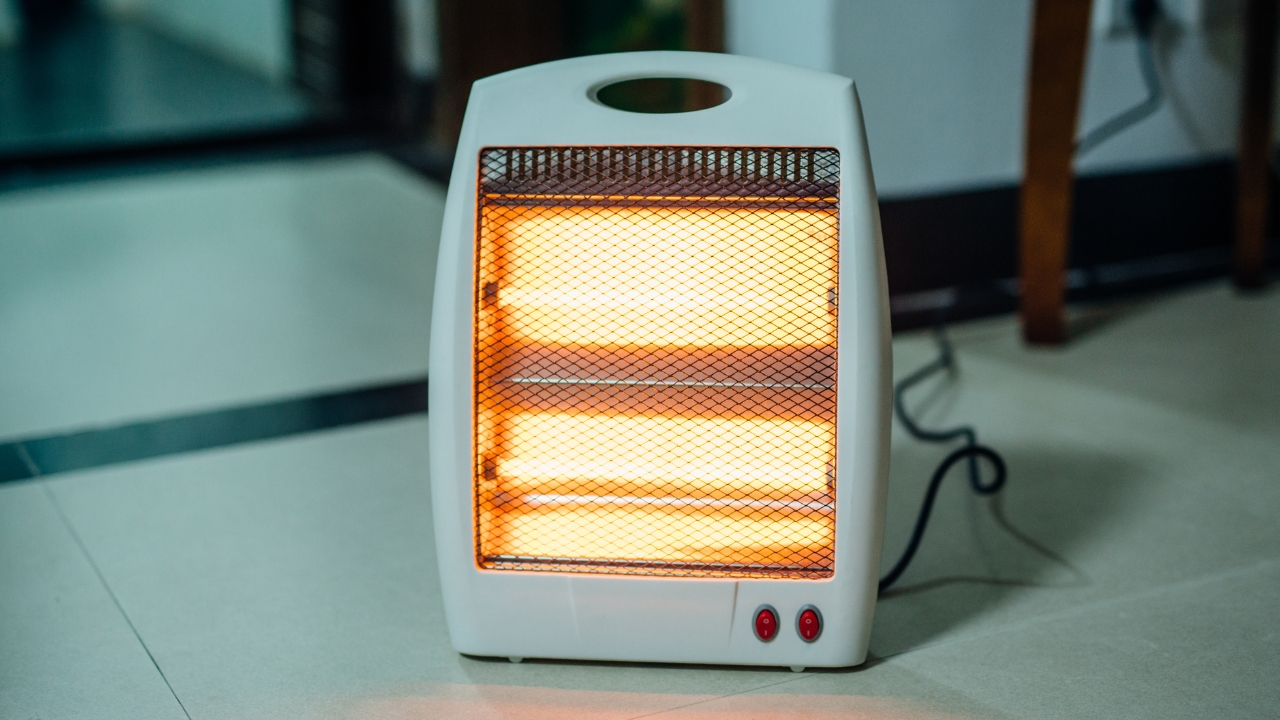
Advantages:
- They do not need installation: Convectors, like heaters, only need to be plugged in to start working. In addition, they are not usually too heavy or large, so you can take them to the room you prefer.
- Silent: They are quite quiet, so they may be ideal for a bedroom.
- They generate clean energy: They do not emit smoke or odors.
- Heats up a small space quickly: They are ideal for quickly heating small rooms.
- Includes thermostat: they can be regulated and start only when the temperature drops below certain degrees.
Disadvantages:
- Less effective for heating large spaces: like resistance heaters, they are not suitable for spaces that are too large.
- They consume a lot: because they use electric resistances to heat up, or halogens, consumption can be high.
Consumption:
- The average consumption could be about 1200W, which is equivalent to 1,2 kWh, which means that it could reach bills of around €50 per month if used several hours a day. That is, little less than the heater.
Electric stoves type oil/water radiators (resistances)

Advantages:
- Energy efficiency: once turned off, they continue to heat the room for about 45 more minutes, until they cool down completely, which maximizes energy use. And, the more elements it has, the more its effect will be noticeable.
- Silent: They do not emit noise, unlike other systems, such as heaters.
- Portables: They usually have wheels to position them where you prefer.
- temperature regulation: You can regulate the temperature and include a thermostat to start up when necessary or turn off.
- Clean: they do not emit any type of gas or smoke, since there is no combustion.
- Without maintenance: They do not require maintenance, purging, or anything like that.
- Insurance: By not having fire or resistance, they are safer from fire or burns.
Disadvantages:
- Slow operation: They are not as effective and fast at quickly heating a room, so they will have to work for a long time to begin to notice a rise in temperature. Ideal as a supplement for other types of heating, or for very small rooms. If it is a room where the door is frequently opened and closed, the radiator is not what you are looking for...
- Electrical cost: Let's not fool ourselves, an internal resistance is required to heat the water or oil, therefore, its consumption is high. The advantage over heaters is that, thanks to the metal elements or bodies, once hot, they continue to emit heat even if the resistance is turned off.
Consumer goods:
- Radiators can consume an average of between 800 and 1200W, and to give you an idea, to heat each square meter, you would need about 100W. Therefore, a room with 9 square meters (medium) would need at least 900W, and it should run for quite some time until it reaches a comfortable temperature. This could mean using a full power mode at first to heat the room, and then lowering it to around 800 or 900W for maintenance. Which could give us average figures of consumption per month of €36.
Mica radiator type electric stoves

Advantages:
- fast heating: Mica radiators can generate heat almost instantly, which is an advantage over other radiators, similar to how the heater does. Therefore, they will not have to run as long to heat the room.
- Silent- You won't have to deal with annoying fan noises.
- No emissions: There is no combustion, so there are no emissions either.
- Adjustable: They usually have a thermostat and temperature regulator to adjust it at all times.
Disadvantages:
- Residual heat: it is minimal, lower than that of conventional radiators, so it will have to be in operation for longer, something that at least compensates for its rapid heating.
Consumer goods:
- It is estimated that mica radiators can consume around 30% less than conventional radiators. Therefore, this would mean that the monthly electricity bill would rise to about €26-30.
Electric radiant panels (infrared)
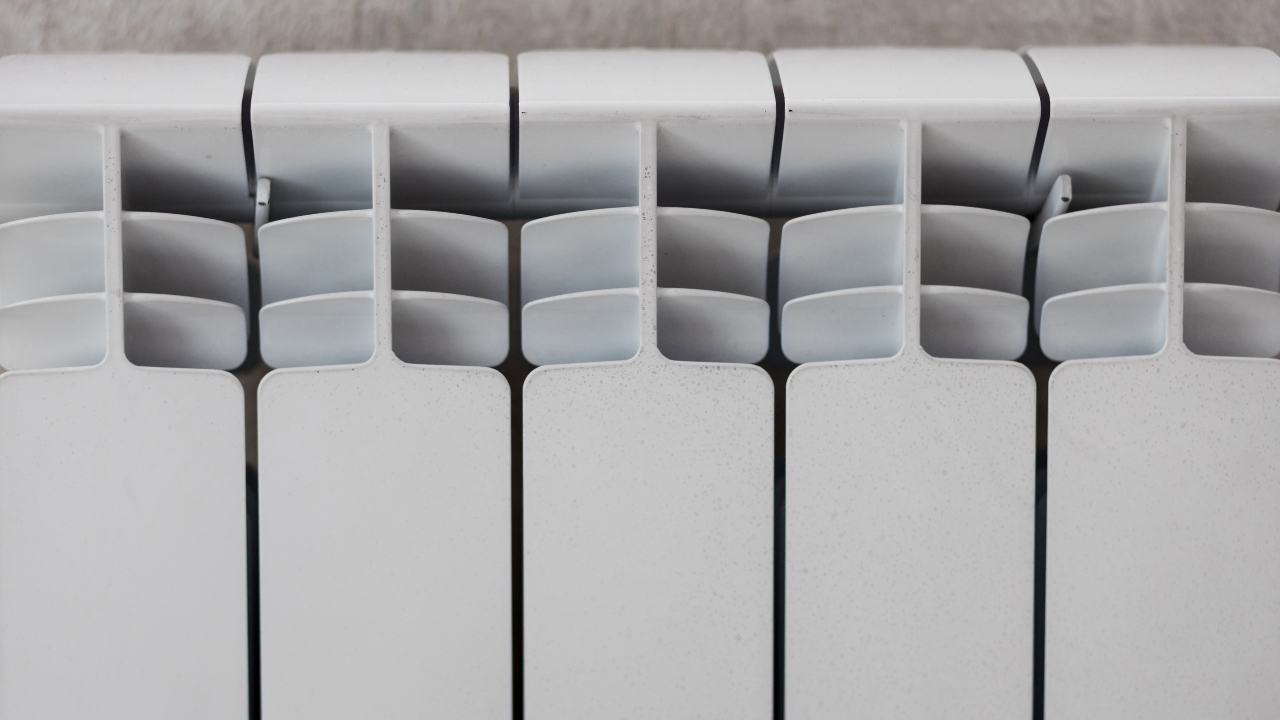
Advantages:
- Energy efficiency and electricity savings- Infrared radiant panels directly heat people or objects in the room, instead of heating all the air. This reduces heat losses and electricity consumption.
- Health benefits: They do not dry out the air and are anti-allergic, which can be beneficial for people with respiratory problems. They also do not emit smoke or gases.
- Saving space and aesthetics- They are slim and can be mounted on the wall or ceiling, saving space and providing an unobtrusive appearance. Many are camouflaged as works of art.
- fast heating: They reach their maximum power in a short time.
Disadvantages:
- Limited range:They have a limited range and primarily heat nearby areas. They are not ideal for large open spaces.
- Uneven heat distribution- Depends on the location of the panels and obstacles in the room.
- They do not work well in drafty rooms- They are not effective in drafty rooms, as heat disperses easily. And they also do not maintain the temperature once they are turned off like radiators.
Consumption:
- In this case we have lower consumption, between 500 and 700W in many cases, which means that consumption per hour can be around 10 euro cents. On the monthly bill it could mean about €25-30. Therefore, they would be the most efficient of what we have.
Radiators with boiler (city gas vs diesel)

Advantages:
- Uniform heat: Radiators provide uniform heat throughout the room as they heat the surrounding air. Once the boiler is turned off, they emit heat for an extra time.
- Efficiency– These systems can be efficient if properly maintained, using smart thermostats.
- Sanitary hot water: Not only do they serve to heat the house, some systems can also provide hot water for domestic use.
Disadvantages:
- Initial cost and maintenance: The initial installation of a boiler and radiators can be expensive. Additionally, they require regular maintenance.
- Warm up time: It may take time to fully heat a room, therefore they should run for longer periods of time.
- Gas emission: Gas and diesel boilers emit combustion gases, which can be a problem in terms of safety and the environment.
Consumption:
- In the case of city gas, the monthly average is usually between 60-80 €.
- If it were diesel, the cost would be, assuming it is used 8 hours a day, about 4 l/day. That would be about €120/month.
Radiating floor
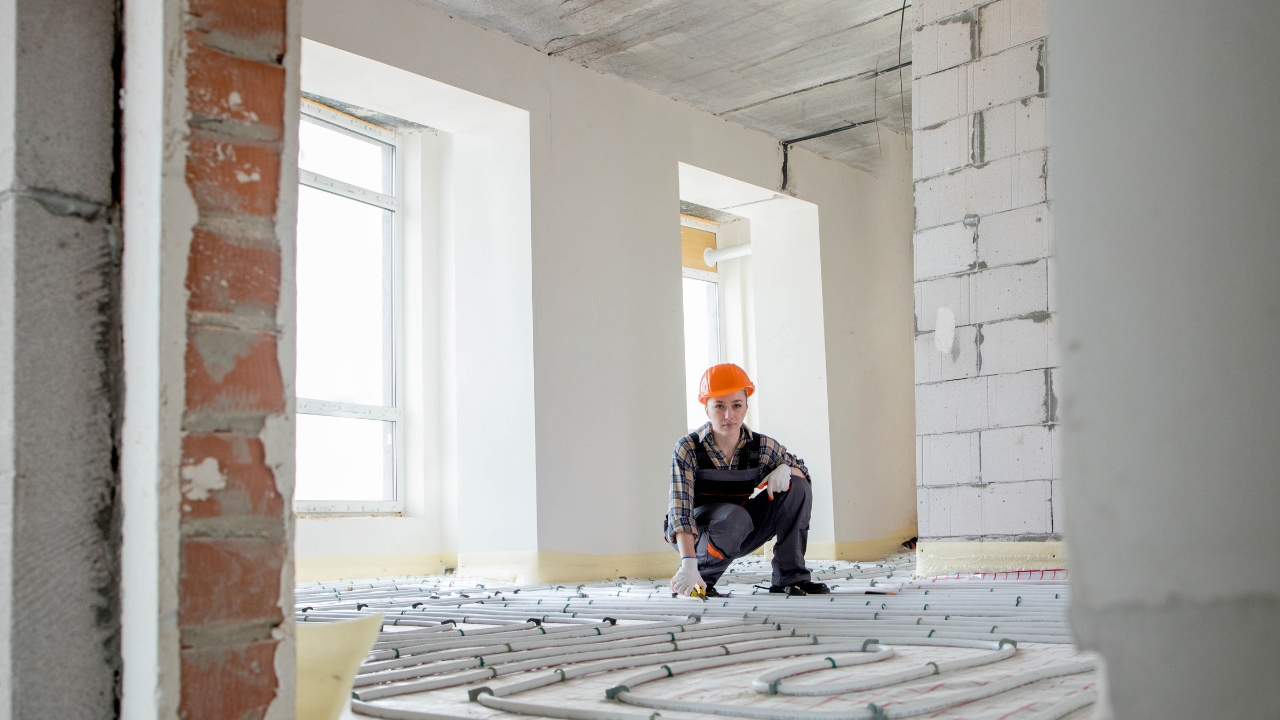
*The above is valid in the case of heating with a boiler, except that since it is all over the floor, the heat is distributed more efficiently and homogeneously. Of course, keep in mind that not all types of floors allow for heat to be used so well, since if the floor material is a thermal insulator, then it will reduce its effectiveness.
Thermal emitters (Joule Effect)
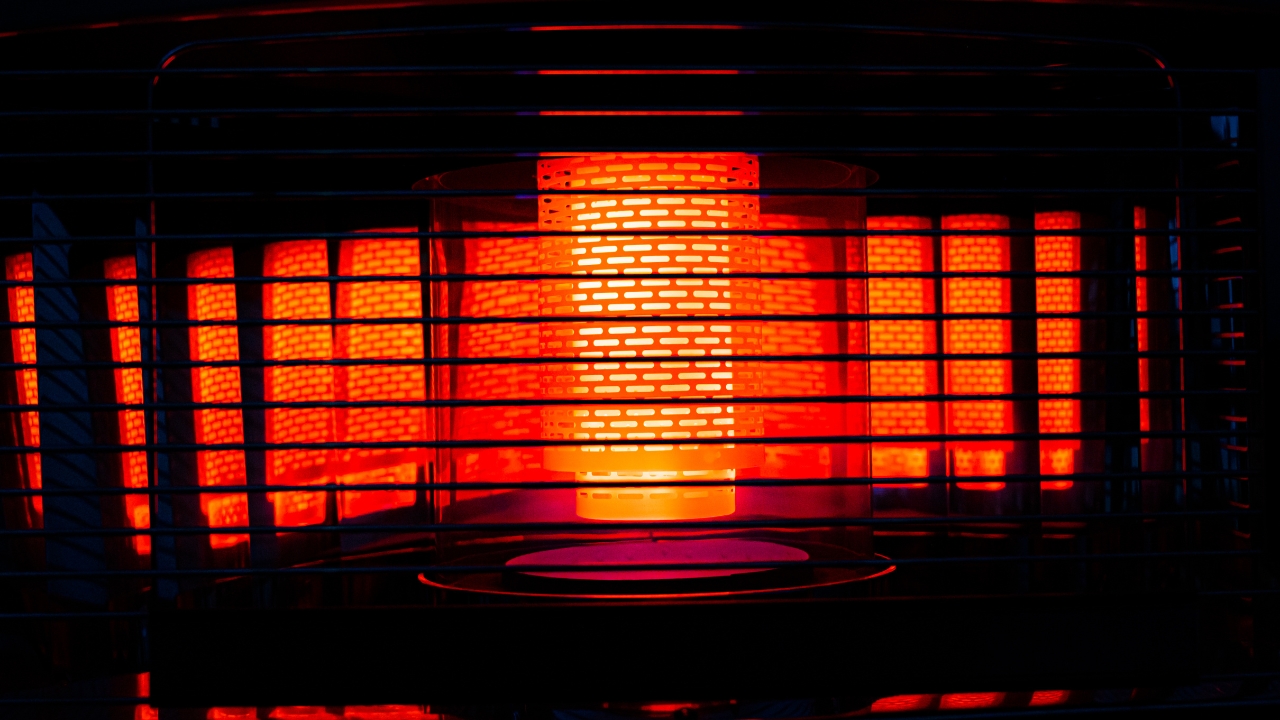
Advantages:
- Energy efficiency: Thermal emitters use the “Joule effect” to efficiently convert electrical energy into heat.
- flexible scheduling: You can program the emitters to turn on and off according to your needs with the thermostat.
- Easy installation: They are simple devices to install and do not require any work, plus they can be taken wherever you want.
Disadvantages:
- Limitations in large spaces: They are more suitable for small or medium-sized rooms. In large spaces, they may not be enough.
- Warm up time: They may take a while to reach the desired temperature. And, unlike radiators, they do not maintain the temperature once they are turned off either.
Consumption:
- The consumption of a thermal emitter can vary greatly, depending on the power of the device, since they range from 600W to 2000W or more. Therefore, we are talking about average consumption between €30 and €96 per month.
Catalytic butane/propane gas stoves
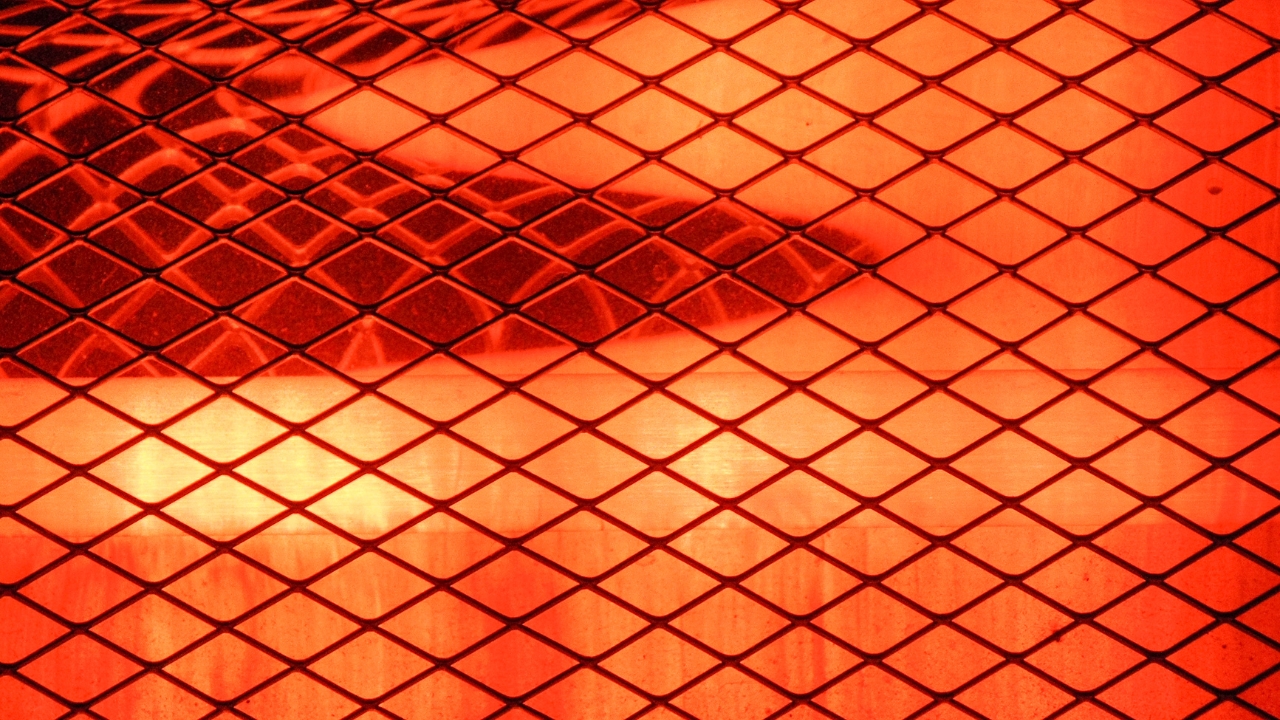
Advantages:
- Energy efficiency: Catalytic gas stoves use a catalytic converter to improve gas combustion. This process results in a more complete burning of the fuel, which maximizes energy efficiency.
- Emission reduction: The more complete combustion process also reduces emissions of harmful gases, although there will be some. This makes them not recommended for small rooms or very closed rooms.
- Speed: They tend to heat the space quickly.
Disadvantages:
- catalyst maintenance: they may require maintenance of the catalyst, in addition to other elements such as gas lines, etc., to be safe. Of course, the gas cylinder or bottle will also have to be changed periodically.
- They do not retain heat: They have to be running to heat the house, once it is turned off, they do not maintain heat like radiators.
- Risks: There can be fires if the flame comes into contact with flammable objects, in addition, there could be accidents due to gas leaks, or explosion of the cylinder due to misuse.
Consumption:
- The consumption of these stoves is usually about 150-200 grams of gas per hour. With this consumption, the gas bottle could last between 10 and 20 days with averages of about 6 hours of daily use. That works out to approximately 1 and a half cylinders per month, which can mean a expenditure of €24/month.
Conventional gas stoves (blue flame)
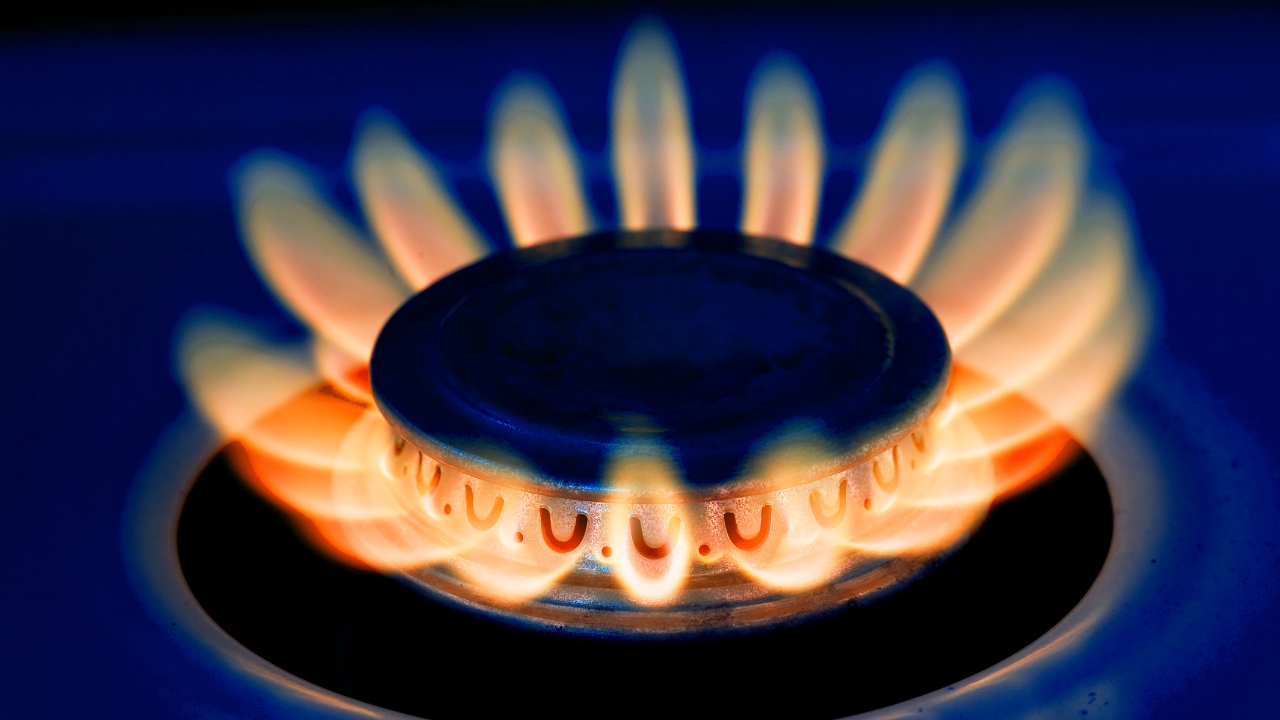
Advantages:
- Energy efficiency- Catalytic gas stoves use a catalytic converter to improve gas combustion. This results in a more complete burn of the fuel, which maximizes energy efficiency.
- Emission reduction: The more complete combustion process also reduces harmful gas emissions, although they do not disappear completely. However, because of this, they are not recommended for small rooms or very closed spaces.
- Speed: These stoves usually heat the space quickly.
Disadvantages:
- catalyst maintenance- May require maintenance of the catalytic converter, in addition to other elements such as gas lines, to ensure safety. In addition, it is necessary to change the gas cylinder or bottle periodically.
- They do not retain heat: Catalytic gas stoves only heat when they are in operation; once turned off, they do not maintain heat like radiators.
- Risks: There is a risk of fire if the flame comes into contact with flammable objects. Additionally, there could be gas leaks or even cylinder explosions due to misuse.
Consumption:
- In this case, unlike catalytic ones, consumption rises to about 300 g/h on average, which can make the cylinder last less, with about 2 cylinders per month if an average of 6 hours are used daily. Therefore, we will talk about consumption of €32 more or less.
Wood vs Pellet Fireplace
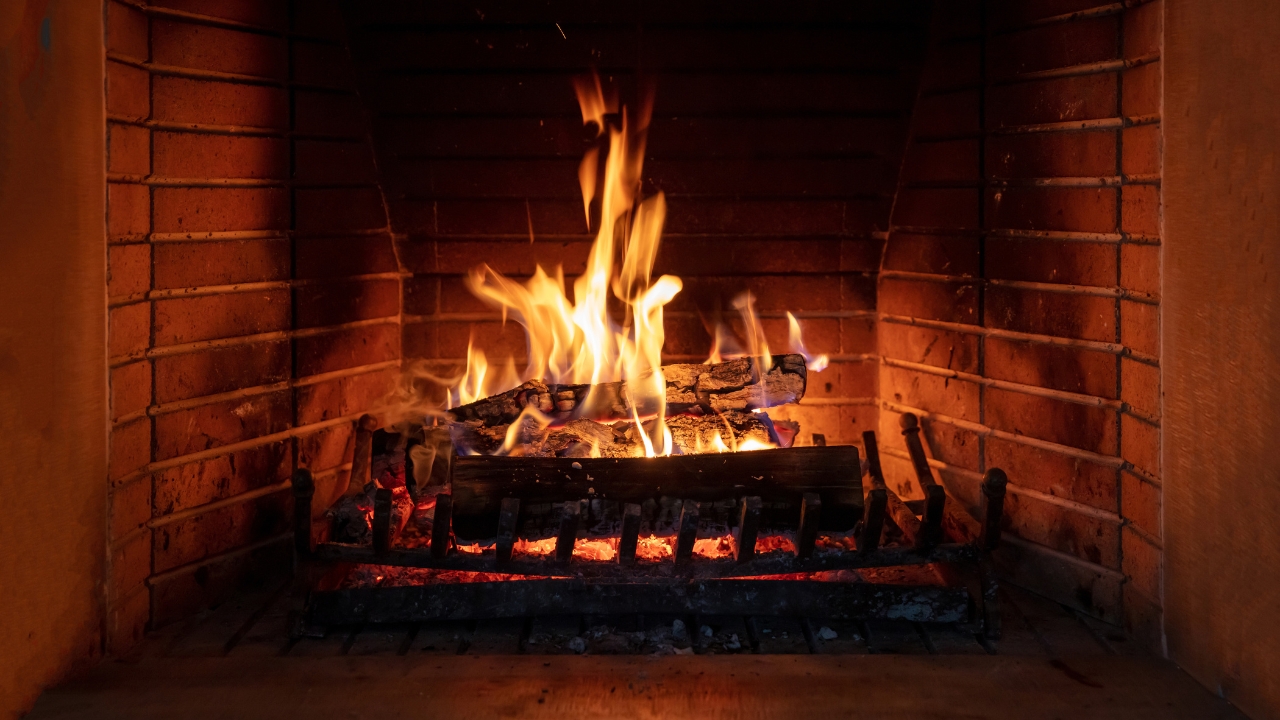
Advantages:
- traditional look: Wood stoves provide cozy warmth and a more traditional look. In addition to the rustic atmosphere, some include an oven for roasts or pizzas, which allows you to take advantage of the heat for this use, without having to operate an electric oven of 2000W or more.
- Heats up fast: These types of stoves or fireplaces heat quite large surfaces quickly.
- Sustainable: firewood can come from pruning trees, such as olive trees, almond trees, etc., and not necessarily from cutting down entire trees. As for pellets, they are usually created using biomass.
Disadvantages:
- Installation: they need work in many cases, especially if they are built-in. Those that are not will need a smoke outlet.
- Storage: They require space to store firewood or pellets and make loading easy.
- Emissions and cleaning: generate smoke and ash, which requires regular cleaning.
- They do not retain heat: They stop heating once turned off.
- Risks: possibility of fire, or smoke poisoning.
Consumption:
- It will depend on the size of the house and the use. But, keeping a fireplace lit for about 8 hours a day could mean buying about 1000 kg of firewood, which has a price of about €120 in the case of olive wood. With this load you could have enough for two, so the monthly expense would be about €50-60.
- With the pellet stove on for about 6 or 8 hours a day, we consume 6 to 8 kg per day, an average of €1,96/day. Therefore, the monthly consumption of a pellet stove is 180 to 240 kg, which represents an average cost of 58€.
Paraffin/bioethanol boiler
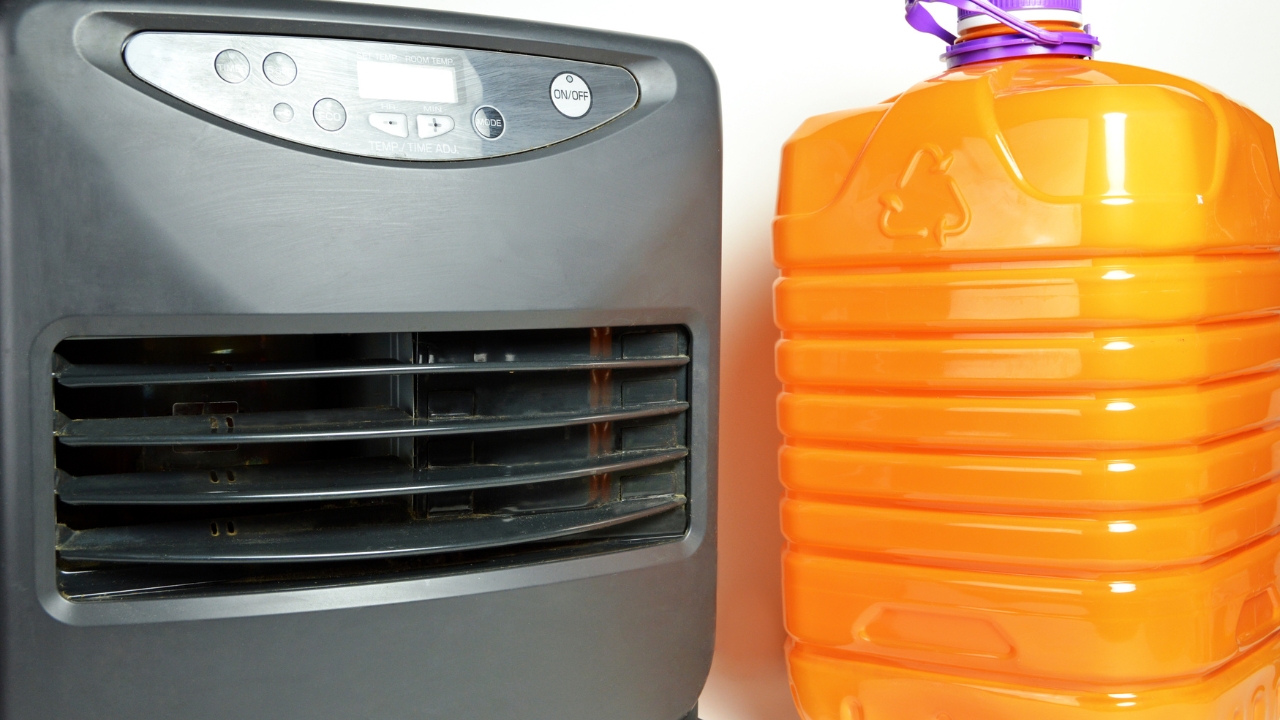
Advantages:
- Efficient: Paraffin ones are usually quite efficient, even more than bioethanol ones. However, in the case of bioethanol it is a liquid fuel derived from plant materials, such as sugar cane or corn, which makes it environmentally friendly.
- Easy installation: they do not require a chimney or complicated works to place them.
- fast heat: They reach a high temperature almost from the beginning.
- clean: They do not emit smoke or ash, making them ideal for homes.
Disadvantages:
- Price: They can be somewhat expensive fuels.
- They do not retain heat: Once turned off, they will cool down soon.
- Odor and fumes: may generate odors and smoke due to combustion.
- Peligro: They must be handled with care, since highly flammable fuels are stored and handled.
Consumer goods:
- The consumption of a bioethanol stove is about 0.4 l per hour, that is, a 24-liter drum could last about 60 hours of use. Each liter is around €4,5. Assuming that it is used in 6-hour cycles, in a month it could be about € 216.
- On the other hand, in a 1 kW paraffin stove, an average consumption of 0.1 to 0.2 liters per hour is assumed. Therefore, with 1 liter there would be approximately 5-10 hours. If an average of 6 hours a day is used, the month could cost about € 292,5, since the price of a liter of paraffin is around €9,75.
And in the case of air conditioning?
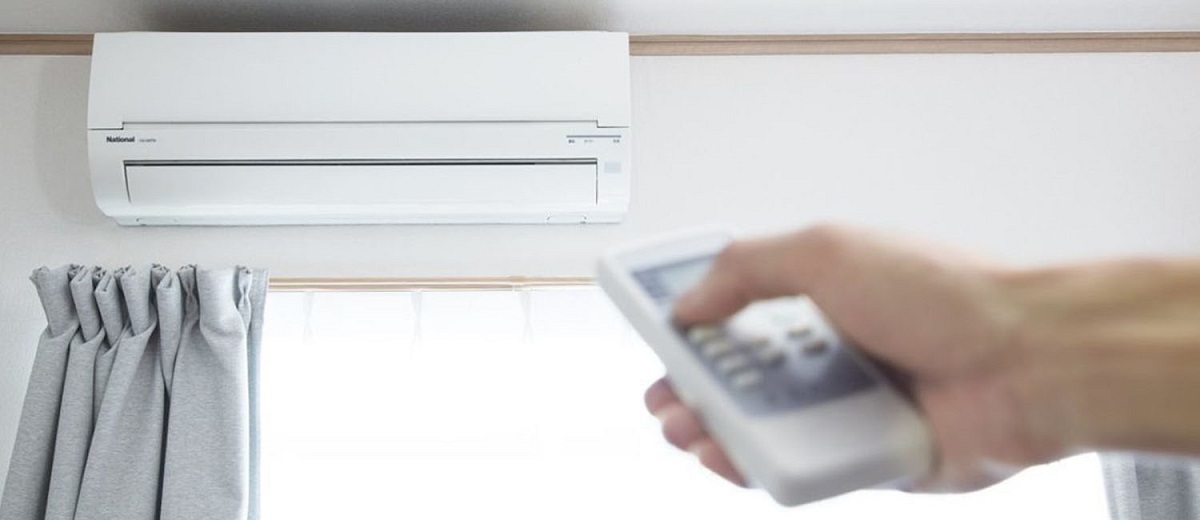
Finally, another of the air conditioning devices that also has the stigma of consuming a lot is the air conditioning. Despite the high temperatures in Spain, the truth is that this device is not one of those that contributes the most to the electricity bill. While heating rises above 5.172 kWh annually, air conditioning can be around 170 kWh. Even less than others such as the refrigerator (662 kWh/year), television (263 kWh/year), washing machine (255 kWh/year), and dishwasher (246 kWh). However, 170 kWh is not a negligible figure, and in addition to the tips and tricks for good thermal insulation that we taught you previously, you should also worry about buying efficient equipment for the summer:









































































